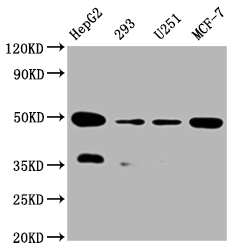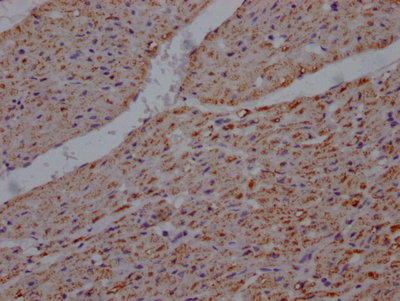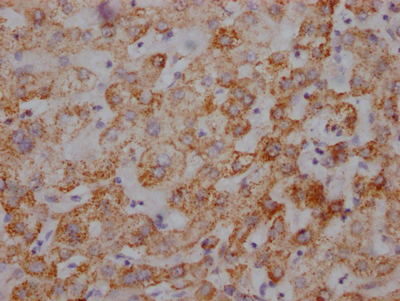The production of a UQCRC2 recombinant monoclonal antibody involves the synthesis of the UQCRC2 monoclonal antibody gene, construction of the UQCRC2 monoclonal antibody gene-containing vector, transfection of the recombinant vector into a host cell line for cultivation, and collection of the desired antibodies from the cell culture supernatant. The generation of the UQCRC2 monoclonal antibody includes immunizing animals with a synthesized peptide derived from human UQCRC2, followed by isolation of B cells and fusion with myeloma cells to generate hybridomas. The UQCRC2 antibody-generating hybridomas are screened for antibody production. The UQCRC2 antibody gene is sequenced to construct a vector for a recombinant generation. The UQCRC2 recombinant monoclonal antibody undergoes affinity chromatography purification from the cell culture supernatant. It has been specifically tested for its reactivity with human UQCRC2 samples in ELISA, WB, and IHC applications.
The UQCRC2 protein is a subunit of mitochondrial respiratory chain complex III, also known as the cytochrome bc1 complex. This complex plays a crucial role in the process of cellular respiration by transferring electrons from ubiquinone to cytochrome c, generating a proton gradient across the inner mitochondrial membrane that is used to produce ATP. UQCRC2 is involved in the transfer of electrons from the Rieske iron-sulfur protein to cytochrome c1 in the complex.








